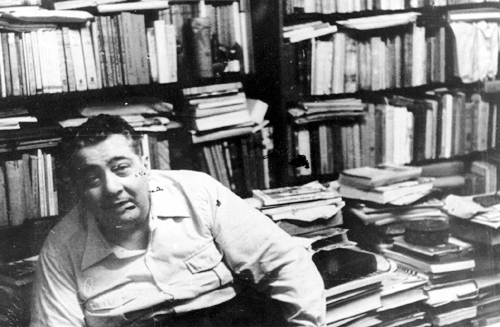4.1.2.2 Essential features of the poetics of José Lezama Lima (1910 – 1976)

José Lezama Lima was perhaps the bard who most profoundly impacted the course of poetics on the island since the substantial contributions of José Martí. His poetics would even become a system for understanding the world and present a new, embodied reality as natural as that perceived through the senses. From its first concretions in “Muerte de Narciso” (Death of Narcissus) of 1937, it already demanded a different reading and critique, capable of penetrating the growing density of Lezama’s images.
A phrase often used in exegeses of the work of this exceptional creator, who stated that “only the difficult is stimulating,” can lead to misinterpretations, since the complexity of this work in all its facets does not betray a deliberate hermeticism but is the fruit of a peculiar worldview, one might say a perception of reality already directly in images, the poet’s mode of existence, nourished by a cultural accumulation in unstoppable progression.
From a young age, he understood the need to save Cuban identity through culture, and especially poetry as the pinnacle of a particular cultural tradition, as a way of warding off the impossibility of fully realizing the nation’s identity in the historical context of the republic. His poetic approach is not, therefore, alien to politics but rather indirectly expresses its frustration and aims to anchor it in a time of plenitude inevitably in the future.
In addition to his dedication to writing, from a young age he gathered a small but important group of intellectuals and artists who accompanied him on his publishing adventures, including “Verbum” in 1937; “Espuela de Plata” in 1939; “Nadie parece” in 1942; and finally, as the definitive flowering of his ideas, “Orígenes” in 1944, whose writing and spirit he was an undisputed guru.
In this regard, Cintio Vitier stated: “He is undoubtedly the most powerful, complex and influential figure, the one who inspires, through affinities or rejections, the various paths (…) To adequately approach his work, it is necessary to understand that Lezama initiates and matures a different sense of poetry in Latin American literature, a sense that, from the point of view of form, revolves around the ideas of resistance or duration of the poetic body, not as a simple juxtaposition or connection of moments, but as writing that feeds on the voluptuousness of the extensive: of time extended in the metaphorical impulse.”
It found its expressive path through “natural wonder,” applied above all to the mythical roots of the island, which also extends to the American continent and converges in a kind of baroque style rooted in Cuban nature and culture, found in its continental and universal location.
Lezama established his aesthetic creed in the face of the trivialization of art and the disintegration taking place in the national consciousness due to a variety of causes, including North American penetration and the slow erosion caused by the so-called “northern way of life.” In this sense, he advocated a transcendent poetics that dominated the contemporary scene with a force that was once again unifying, as Martí had once achieved not only with his poetry but also with his revolutionary actions.








